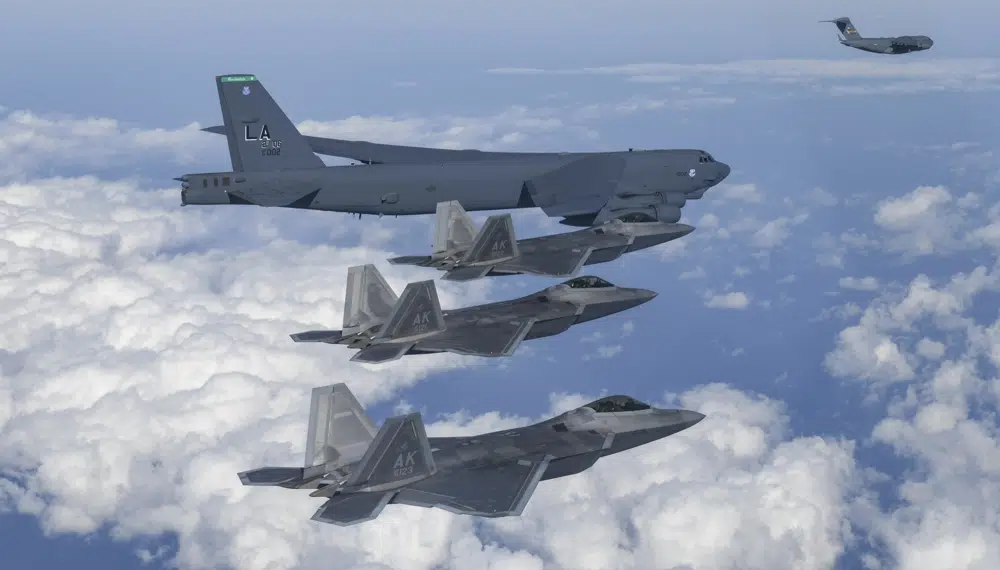On Wednesday, the United States flew nuclear-capable B-52 bombers to the Korean Peninsula as a display of strength against North Korea. This action comes amid concerns that North Korea may conduct a nuclear test. The joint aerial drills involved the B-52 bombers, US and South Korean fighter jets, and were the first deployment of US B-52 bombers to the peninsula in a month. According to South Korea’s Defense Ministry, the drills demonstrate the strong resolve of the South Korea-US alliance and their readiness to respond to any provocation by North Korea quickly and overwhelmingly. Lt. Gen. Park Ha Sik, commander of the South Korean air force operation command, made this statement.
In light of North Korea’s nuclear and missile threats, the South Korean and US militaries have been increasing their joint military drills. Recently, they conducted their largest field exercises in five years and also performed computer simulations. Additionally, the US sent the nuclear-powered USS Nimitz aircraft carrier for joint naval training with South Korea last week and participated in anti-submarine drills with South Korea and Japan this week.
The North Korean regime views these drills as provocative actions that signal the intentions of its rivals to attack the North. Just one day after the most recent B-52 bomber flight to the Korean Peninsula on March 6, Kim Yo Jong, the influential sister of North Korean leader Kim Jong Un, issued a warning stating that her country was prepared to take swift and decisive action against the United States and South Korea.
Following the previous events, North Korea has test-launched a series of nuclear-capable weapons designed to target both South Korea and the United States. These include the Hwasong-17 intercontinental ballistic missile, which has the longest range in North Korea’s arsenal, a developmental nuclear-capable underwater drone, and cruise missiles launched from a submarine.
Recently, North Korea unveiled a new battlefield nuclear warhead specifically designed for short-range weapons targeting South Korea. This has sparked speculation that the regime may want to conduct its first nuclear test since 2017, as its previous two nuclear test detonations occurred after it revealed new warheads. If such a test were to occur, it would be the seventh nuclear weapons test carried out by North Korea.
There is ongoing debate over whether North Korea possesses operational nuclear-armed missiles. Some experts suggest that recent weapons testing has focused on miniaturizing warheads for short-range missiles, potentially targeting key military installations in South Korea and US military bases. North Korean leader Kim Jong Un has stated that denuclearization talks with the US will not resume unless the US drops its hostile policies, including joint military drills with South Korea and international economic sanctions. Observers speculate that Kim aims to use North Korea’s growing weapons arsenal to pressure the US to accept it as a nuclear power and lift sanctions. The chief nuclear envoys of South Korea, the US, and Japan are scheduled to meet in Seoul on Friday to discuss how to respond to tensions stemming from North Korea’s recent weapons tests, according to Seoul’s Foreign Ministry.
In a policy meeting held on Wednesday, South Korean President Yoon Suk Yeol emphasized the importance of security cooperation between Seoul, Washington, and Tokyo in addressing North Korea’s nuclear threats and other challenges. He called for strengthening South Korea’s preemptive strike, missile defense, and retaliatory attack capabilities, while also enhancing the deterrence capacity of the South Korea-US alliance.

























